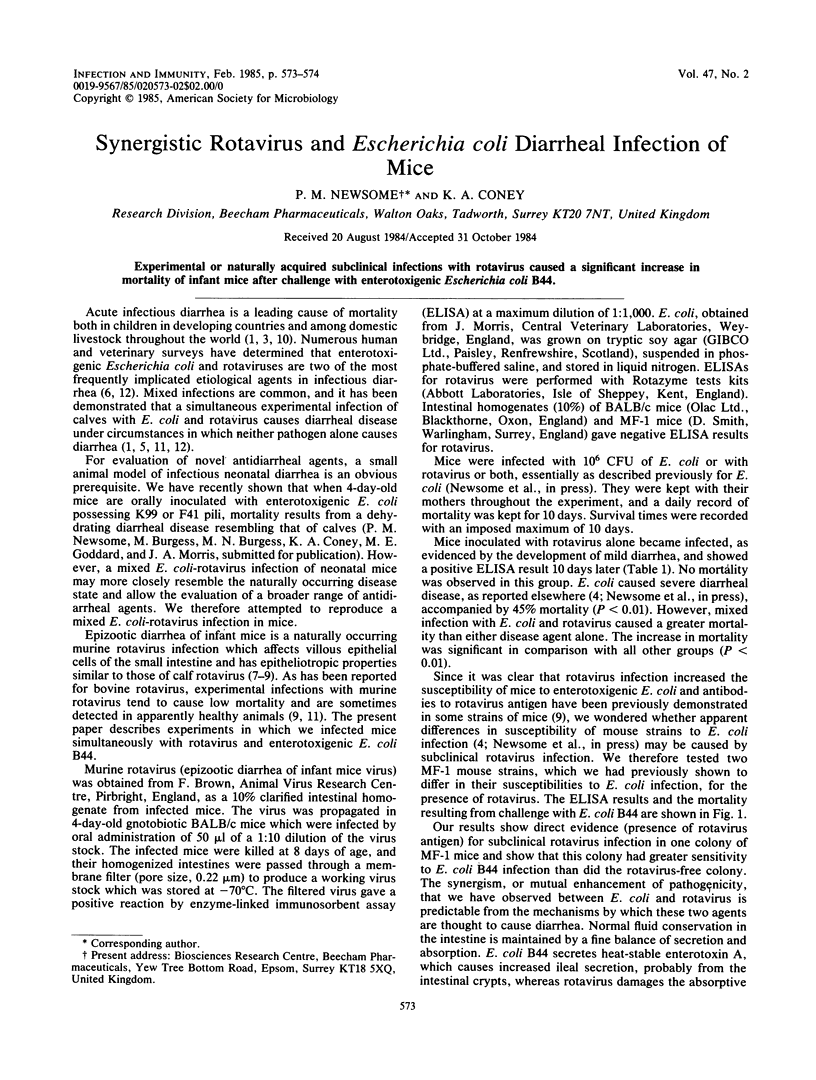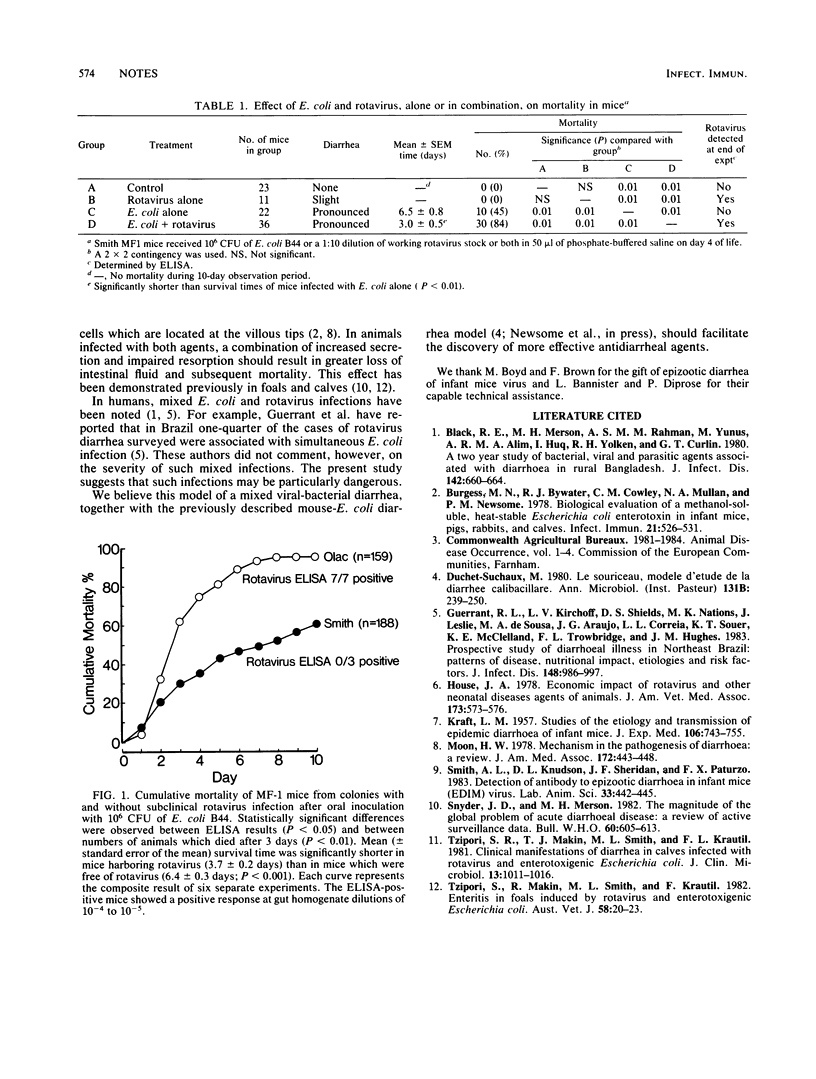Abstract
Experimental or naturally acquired subclinical infections with rotavirus caused a significant increase in mortality of infant mice after challenge with enterotoxigenic Escherichia coli B44.
Full text
PDF

Selected References
These references are in PubMed. This may not be the complete list of references from this article.
- Black R. E., Merson M. H., Rahman A. S., Yunus M., Alim A. R., Huq I., Yolken R. H., Curlin G. T. A two-year study of bacterial, viral, and parasitic agents associated with diarrhea in rural Bangladesh. J Infect Dis. 1980 Nov;142(5):660–664. doi: 10.1093/infdis/142.5.660. [DOI] [PMC free article] [PubMed] [Google Scholar]
- Burgess M. N., Bywater R. J., Cowley C. M., Mullan N. A., Newsome P. M. Biological evaluation of a methanol-soluble, heat-stable Escherichia coli enterotoxin in infant mice, pigs, rabbits, and calves. Infect Immun. 1978 Aug;21(2):526–531. doi: 10.1128/iai.21.2.526-531.1978. [DOI] [PMC free article] [PubMed] [Google Scholar]
- Duchet-Suchaux M. Le souriceau, modèle d'étude de la diarrhée colibacillaire. Ann Microbiol (Paris) 1980 Nov-Dec;131B(3):239–250. [PubMed] [Google Scholar]
- Guerrant R. L., Kirchhoff L. V., Shields D. S., Nations M. K., Leslie J., de Sousa M. A., Araujo J. G., Correia L. L., Sauer K. T., McClelland K. E. Prospective study of diarrheal illnesses in northeastern Brazil: patterns of disease, nutritional impact, etiologies, and risk factors. J Infect Dis. 1983 Dec;148(6):986–997. doi: 10.1093/infdis/148.6.986. [DOI] [PubMed] [Google Scholar]
- House J. A. Economic impact of rotavirus and other neonatal disease agents of animals. J Am Vet Med Assoc. 1978 Sep 1;173(5 Pt 2):573–576. [PubMed] [Google Scholar]
- KRAFT L. M. Studies on the etiology and transmission of epidemic diarrhea of infant mice. J Exp Med. 1957 Nov 1;106(5):743–755. doi: 10.1084/jem.106.5.743. [DOI] [PMC free article] [PubMed] [Google Scholar]
- Moon H. W. Mechanisms in the pathogenesis of diarrhea: a review. J Am Vet Med Assoc. 1978 Feb 15;172(4):443–448. [PubMed] [Google Scholar]
- Smith A. L., Knudson D. L., Sheridan J. F., Paturzo F. X. Detection of antibody to epizootic diarrhea of infant mice (EDIM) virus. Lab Anim Sci. 1983 Oct;33(5):442–445. [PubMed] [Google Scholar]
- Snyder J. D., Merson M. H. The magnitude of the global problem of acute diarrhoeal disease: a review of active surveillance data. Bull World Health Organ. 1982;60(4):605–613. [PMC free article] [PubMed] [Google Scholar]
- Tzipori S. R., Makin T. J., Smith M. L., Krautil F. L. Clinical manifestations of diarrhea in calves infected with rotavirus and enterotoxigenic Escherichia coli. J Clin Microbiol. 1981 Jun;13(6):1011–1016. doi: 10.1128/jcm.13.6.1011-1016.1981. [DOI] [PMC free article] [PubMed] [Google Scholar]
- Tzipori S., Makin T., Smith M., Krautil F. Enteritis in foals induced by rotavirus and enterotoxigenic Escherichia coli. Aust Vet J. 1982 Jan;58(1):20–23. doi: 10.1111/j.1751-0813.1982.tb00572.x. [DOI] [PubMed] [Google Scholar]


